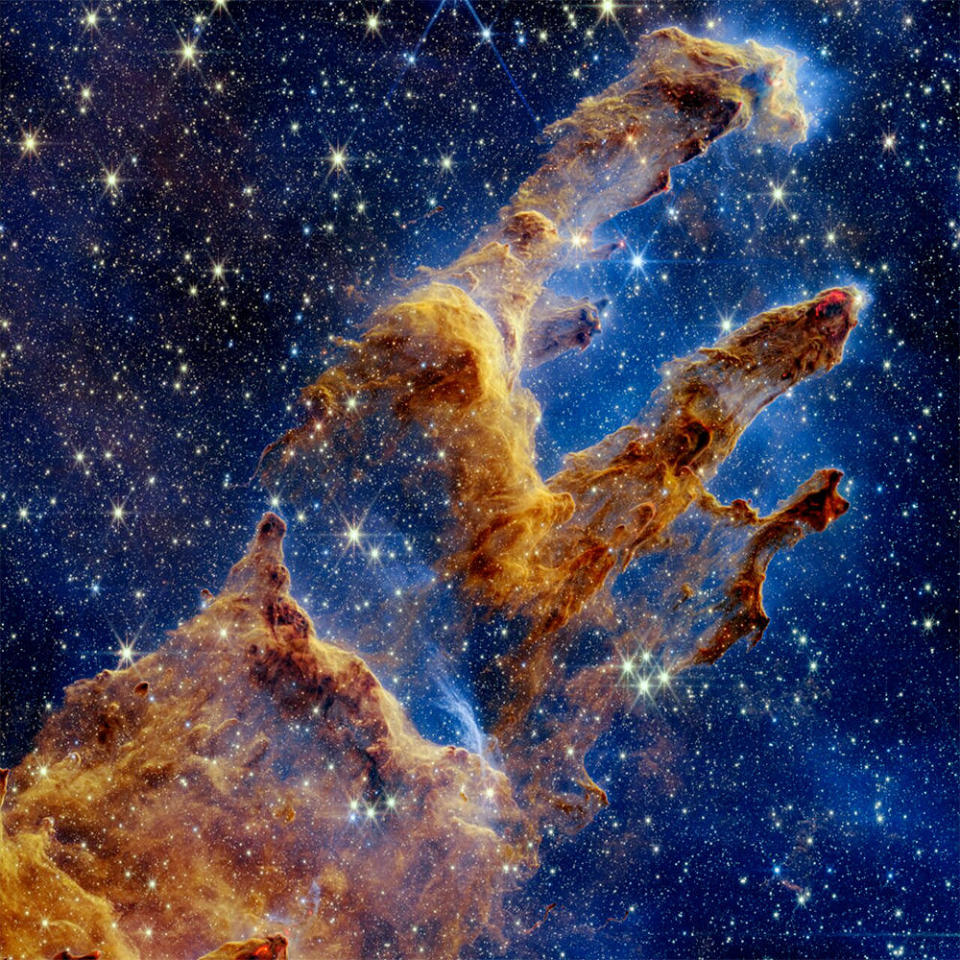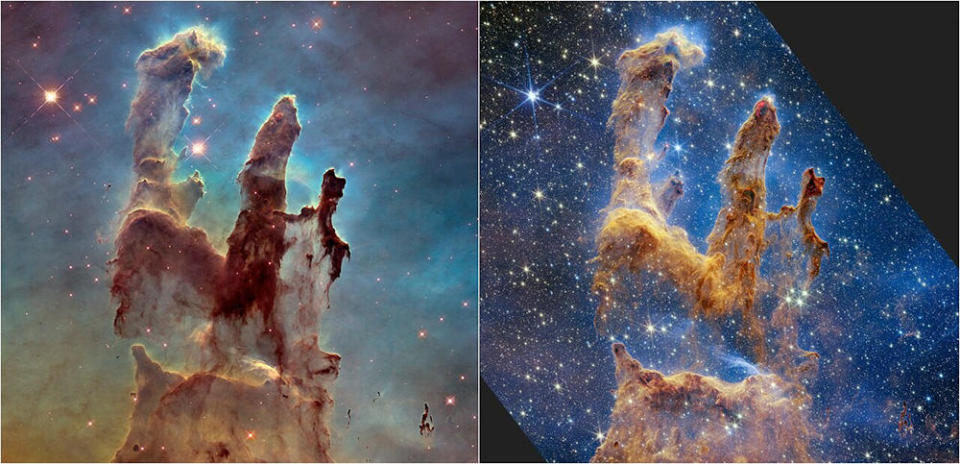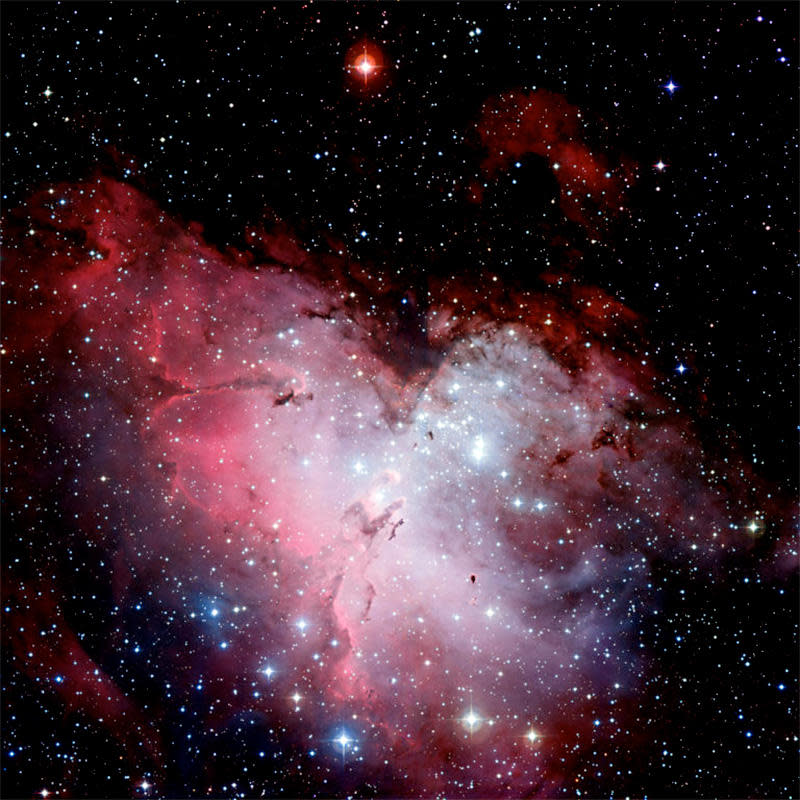Webb takes Hubble's "Pillars of Creation" to new heights
One of the Hubble Space Telescope's most iconic images, a vast stellar nursery dubbed "The Pillars of Creation," has been taken to new heights by the James Webb Space Telescope in a stunning infrared view revealing countless previously unseen stars and intricate detail in towering clouds of gas sculpted by embedded protosuns.
The pillars are part of the Eagle Nebula, also known as M-16, in the plane of the Milky Way some 6,500 light years from Earth. It's a target familiar to legions of amateur astronomers as an easy-to-find patch of nebulosity in the constellation Serpens near the border of Sagittarius.

First observed in 1745-46 by the Swiss astronomer Jean-Philippe Loys de Chéseaux, the towering pillars can be observed by amateurs with larger instruments at the center of the eagle-shaped nebula, which stretches across 70 light years.
But the true nature of the pillars was famously revealed in 1995 by the Hubble Space Telescope, an image that wowed the public and was soon one of the most recognized and widely published photos ever captured by the venerable observatory.

But Hubble is primarily a visible-light telescope with only a limited ability to detect cloud-piercing infrared emissions from the interior of the pillars and from stars shining in and behind a translucent, obscuring layer of gas making up the interstellar medium that is most apparent looking into the plane of the galaxy.

Enter the $10 billion James Webb Space Telescope.
In Webb's infrared view of the pillars, thousands of previously unseen stars are revealed in the interstellar medium, while the towers themselves show the intricate effects of radiation from newly formed stars sculpting finger-like extensions, swirls and eddies in rich brown hues.
"Young stars periodically shoot out jets that can interact within clouds of material, like these thick pillars of gas and dust," NASA said in a release. "This sometimes also results in bow shocks, which can form wavy patterns like a boat does as it moves through water.
"These young stars are estimated to be only a few hundred thousand years old, and will continue to form for millions of years."
Students hospitalized after carbon monoxide leak

